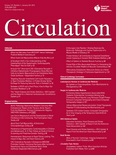 Genetic defects in calpain3 (CAPN3) leads to Limb-Girdle Muscular Dystrophy type 2A (LGMD2A), a disease of the skeletal muscle that affects predominantly the proximal limb muscles. The authors of this study have previously demonstrated the potential of Adeno-Associated Virus (AAV)-mediated transfer of the CAPN3 gene to correct the pathological signs in a murine model for LGMD2A after intramuscular and loco-regional administrations. Here, they show that intravenous injection of calpain3-expressing vector in mice can induce mortality in a dose-dependent manner. An anatomo-pathological investigation revealed large areas of fibrosis in the heart that were related to unregulated proteolytic activity of calpain3. To circumvent this toxicity, the authors developed new AAV vectors with skeletal muscle-restricted expression by using new muscle-specific promoters that include the CAPN3 promoter itself and by introducing a target sequence of the cardiac-specific microRNA-208a in the cassette. Their results show that CAPN3 transgene expression can be successfully suppressed in the cardiac tissue, preventing the cardiac toxicity, while expression of the transgene in skeletal muscle reverts the pathological signs of calpain3 deficiency. The molecular strategies used in this study may be useful for any gene transfer strategy with potential toxicity in the heart.
Genetic defects in calpain3 (CAPN3) leads to Limb-Girdle Muscular Dystrophy type 2A (LGMD2A), a disease of the skeletal muscle that affects predominantly the proximal limb muscles. The authors of this study have previously demonstrated the potential of Adeno-Associated Virus (AAV)-mediated transfer of the CAPN3 gene to correct the pathological signs in a murine model for LGMD2A after intramuscular and loco-regional administrations. Here, they show that intravenous injection of calpain3-expressing vector in mice can induce mortality in a dose-dependent manner. An anatomo-pathological investigation revealed large areas of fibrosis in the heart that were related to unregulated proteolytic activity of calpain3. To circumvent this toxicity, the authors developed new AAV vectors with skeletal muscle-restricted expression by using new muscle-specific promoters that include the CAPN3 promoter itself and by introducing a target sequence of the cardiac-specific microRNA-208a in the cassette. Their results show that CAPN3 transgene expression can be successfully suppressed in the cardiac tissue, preventing the cardiac toxicity, while expression of the transgene in skeletal muscle reverts the pathological signs of calpain3 deficiency. The molecular strategies used in this study may be useful for any gene transfer strategy with potential toxicity in the heart.
